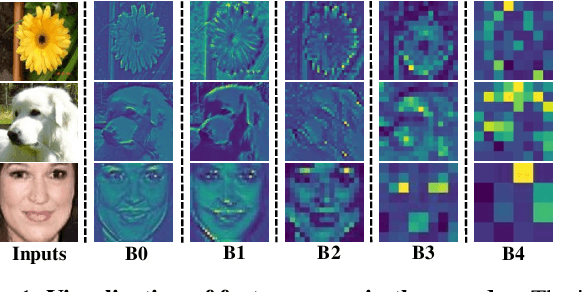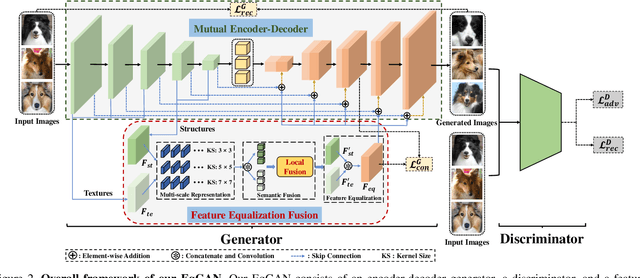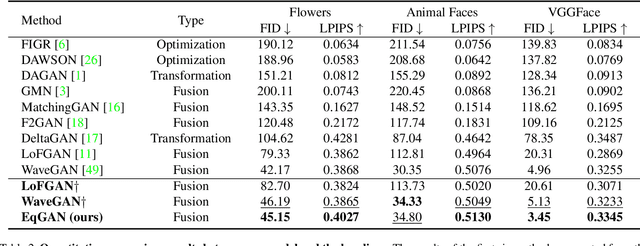Yutong Ye
FitLight: Federated Imitation Learning for Plug-and-Play Autonomous Traffic Signal Control
Feb 17, 2025Abstract:Although Reinforcement Learning (RL)-based Traffic Signal Control (TSC) methods have been extensively studied, their practical applications still raise some serious issues such as high learning cost and poor generalizability. This is because the ``trial-and-error'' training style makes RL agents extremely dependent on the specific traffic environment, which also requires a long convergence time. To address these issues, we propose a novel Federated Imitation Learning (FIL)-based framework for multi-intersection TSC, named FitLight, which allows RL agents to plug-and-play for any traffic environment without additional pre-training cost. Unlike existing imitation learning approaches that rely on pre-training RL agents with demonstrations, FitLight allows real-time imitation learning and seamless transition to reinforcement learning. Due to our proposed knowledge-sharing mechanism and novel hybrid pressure-based agent design, RL agents can quickly find a best control policy with only a few episodes. Moreover, for resource-constrained TSC scenarios, FitLight supports model pruning and heterogeneous model aggregation, such that RL agents can work on a micro-controller with merely 16{\it KB} RAM and 32{\it KB} ROM. Extensive experiments demonstrate that, compared to state-of-the-art methods, FitLight not only provides a superior starting point but also converges to a better final solution on both real-world and synthetic datasets, even under extreme resource limitations.
SeqMIA: Sequential-Metric Based Membership Inference Attack
Jul 21, 2024Abstract:Most existing membership inference attacks (MIAs) utilize metrics (e.g., loss) calculated on the model's final state, while recent advanced attacks leverage metrics computed at various stages, including both intermediate and final stages, throughout the model training. Nevertheless, these attacks often process multiple intermediate states of the metric independently, ignoring their time-dependent patterns. Consequently, they struggle to effectively distinguish between members and non-members who exhibit similar metric values, particularly resulting in a high false-positive rate. In this study, we delve deeper into the new membership signals in the black-box scenario. We identify a new, more integrated membership signal: the Pattern of Metric Sequence, derived from the various stages of model training. We contend that current signals provide only partial perspectives of this new signal: the new one encompasses both the model's multiple intermediate and final states, with a greater emphasis on temporal patterns among them. Building upon this signal, we introduce a novel attack method called Sequential-metric based Membership Inference Attack (SeqMIA). Specifically, we utilize knowledge distillation to obtain a set of distilled models representing various stages of the target model's training. We then assess multiple metrics on these distilled models in chronological order, creating distilled metric sequence. We finally integrate distilled multi-metric sequences as a sequential multiformat and employ an attention-based RNN attack model for inference. Empirical results show SeqMIA outperforms all baselines, especially can achieve an order of magnitude improvement in terms of TPR @ 0.1% FPR. Furthermore, we delve into the reasons why this signal contributes to SeqMIA's high attack performance, and assess various defense mechanisms against SeqMIA.
Situation-Dependent Causal Influence-Based Cooperative Multi-agent Reinforcement Learning
Dec 15, 2023



Abstract:Learning to collaborate has witnessed significant progress in multi-agent reinforcement learning (MARL). However, promoting coordination among agents and enhancing exploration capabilities remain challenges. In multi-agent environments, interactions between agents are limited in specific situations. Effective collaboration between agents thus requires a nuanced understanding of when and how agents' actions influence others. To this end, in this paper, we propose a novel MARL algorithm named Situation-Dependent Causal Influence-Based Cooperative Multi-agent Reinforcement Learning (SCIC), which incorporates a novel Intrinsic reward mechanism based on a new cooperation criterion measured by situation-dependent causal influence among agents. Our approach aims to detect inter-agent causal influences in specific situations based on the criterion using causal intervention and conditional mutual information. This effectively assists agents in exploring states that can positively impact other agents, thus promoting cooperation between agents. The resulting update links coordinated exploration and intrinsic reward distribution, which enhance overall collaboration and performance. Experimental results on various MARL benchmarks demonstrate the superiority of our method compared to state-of-the-art approaches.
EqGAN: Feature Equalization Fusion for Few-shot Image Generation
Jul 27, 2023



Abstract:Due to the absence of fine structure and texture information, existing fusion-based few-shot image generation methods suffer from unsatisfactory generation quality and diversity. To address this problem, we propose a novel feature Equalization fusion Generative Adversarial Network (EqGAN) for few-shot image generation. Unlike existing fusion strategies that rely on either deep features or local representations, we design two separate branches to fuse structures and textures by disentangling encoded features into shallow and deep contents. To refine image contents at all feature levels, we equalize the fused structure and texture semantics at different scales and supplement the decoder with richer information by skip connections. Since the fused structures and textures may be inconsistent with each other, we devise a consistent equalization loss between the equalized features and the intermediate output of the decoder to further align the semantics. Comprehensive experiments on three public datasets demonstrate that, EqGAN not only significantly improves generation performance with FID score (by up to 32.7%) and LPIPS score (by up to 4.19%), but also outperforms the state-of-the-arts in terms of accuracy (by up to 1.97%) for downstream classification tasks.
 Add to Chrome
Add to Chrome Add to Firefox
Add to Firefox Add to Edge
Add to Edge